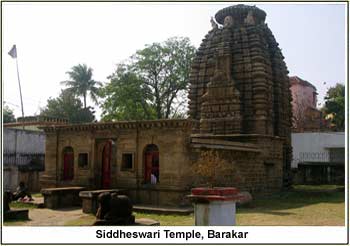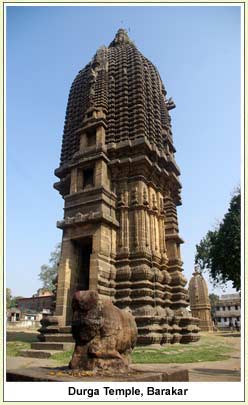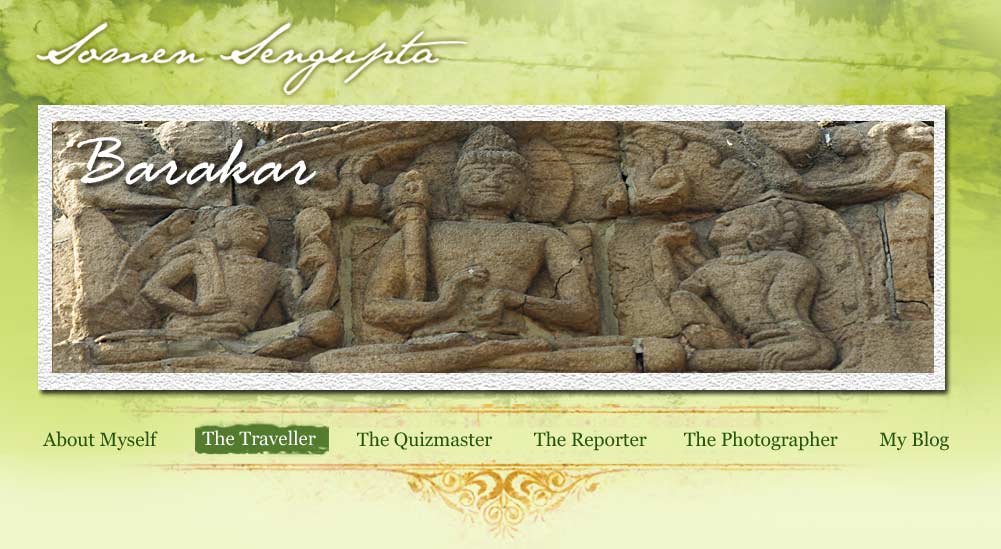| A peerless temple complex is a little difficult to imagine in a region populated by migratory labourers, where coal mining is the primary source of income. But then Barakar is no ordinary tourist spot. It is the land of black diamond and the four temples in the Begunia area are its hidden treasures. They are unique because there is hardly any place of worship made of stone in the state. Moreover, no other temple in the state betrays such deep influence of the Orissa school of architecture as these. Historians even maintain that the structures are the finest of their kind.
A small town in the Asansol sub-division, Barakar gets its name from the river that flows by it. It is surrounded by the coal fields of Jharkhand and Bengal. Begunia is the commercial hub of Barakar. Behind the crowded market, a small open space is the site of the temples. The complex, which is now looked after by the Archaeological Survey of India, is a must-visit for those interested in architecture.
At first glance, you will feel that you are in a village in Orissa. However, it is still a mystery why the builders were so influenced by the Rekh Deul style.The earliest reference to the temples can be found in a book named History of Indian & Eastern Architecture by James Fergusson. In the book, a woodcut of one of the temples was mistakenly referred to as the Bankura temple. The complex was correctly identified in print in 1878, in a report prepared by the Archaeological Survey of India. The temples are dedicated to Ganesha, Kali, Durga and Siddheswari. The first two stand side by side, while the rest are a few yards behind them. Three of the structures are almost identical. Except one, the temples face the east. Two of the temples consist of a simple cell with richly decorated towers on top.
There is a prominent inscription in Bengali on a temple door. The legend does not carry a date, making the task of determining the age of the structure difficult. The architectural style and the engineering suggest the temple was built in the 13th century, during the Islamic era. The inscription on the walls of another temple credits a king named Harishchandra for its construction. It was apparently completed in 1462 and dedicated to Harishchandra's queen Haripriya.
Yet another inscription, on the walls of a third temple, mentions that it was renovated and repaired by a Brahmin named Nanda and his wife in 1646. Beyond that, nothing is known about the couple. Archaeologist S.K. Saraswati has compared the four edifices with the Parasu Rameshwar temple. The two gigantic structures that stand side by side are made of black and grey sandstone. They are of equal height and have stone bulls in front. The flying lions on the outer walls of the temples are typical of the Orissa school of architecture.

Excellent stone sculptures interspersed with Hindu motifs like bells and lotuses embellish all the temples. Figures of dancing girls, monsters, Ganesha and Shiva are quite common. It would be difficult to find better temple sculptures in any part of Bengal. In the Ganesha temple, the idol is placed on a pedestal. The Kali temple is perhaps the most interesting in the group. Here the object of worship is a stone fish - a symbol of female power. Unlike the other temples, it faces west and is the tallest.
The Siddheswari temple houses a cell and a vestibule. A shivling, 55 inches in diameter, is also worshipped here. The temple has a courtyard on one side. Though walls of the structure are not ornate, its overall beauty is unrivalled. Archaeologist Saraswati is of the opinion that the Durga temple is the oldest. According to him, it was constructed between the 8th and 9th century, which would make it the oldest Rekh structure in the state. Professor Nirmal Kumar Bose, who has studied these temples extensively, points out the influence of south Indian architecture. It will take you more than two hours to tour the complex.
Afterwards, move on to Devi Kalyaneswari temple, about four miles away. The edifice is not comparable to the Begunia temples in terms of architecture, but is very popular among locals. The abode of the goddess of fulfilment is situated on Halda hill. It is nearly 450 years old and was built by Kalyan Singh of Kashipur. The place soon became a hub of the Shakta cult. For a long time, human sacrifice was practised in the temple. Thankfully, that's no longer the case.
Going
Barakar is 275 km from Calcutta. It is the station after Asansol and takes around four-and-a-half hours to reach by train. Black Diamond is a good option
Staying
Hire a cycle-rickshaw to the temple complex. Cars are available to the Kalyaneswari temple. Maithan dam is nearby. There are good places to stay in Asansol |



